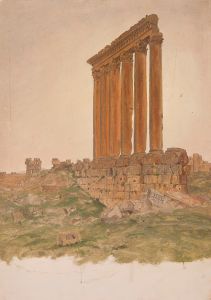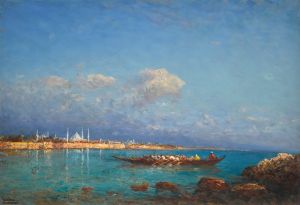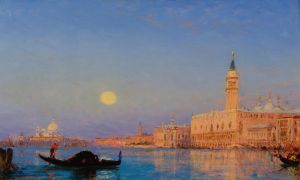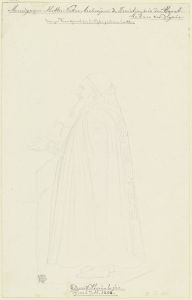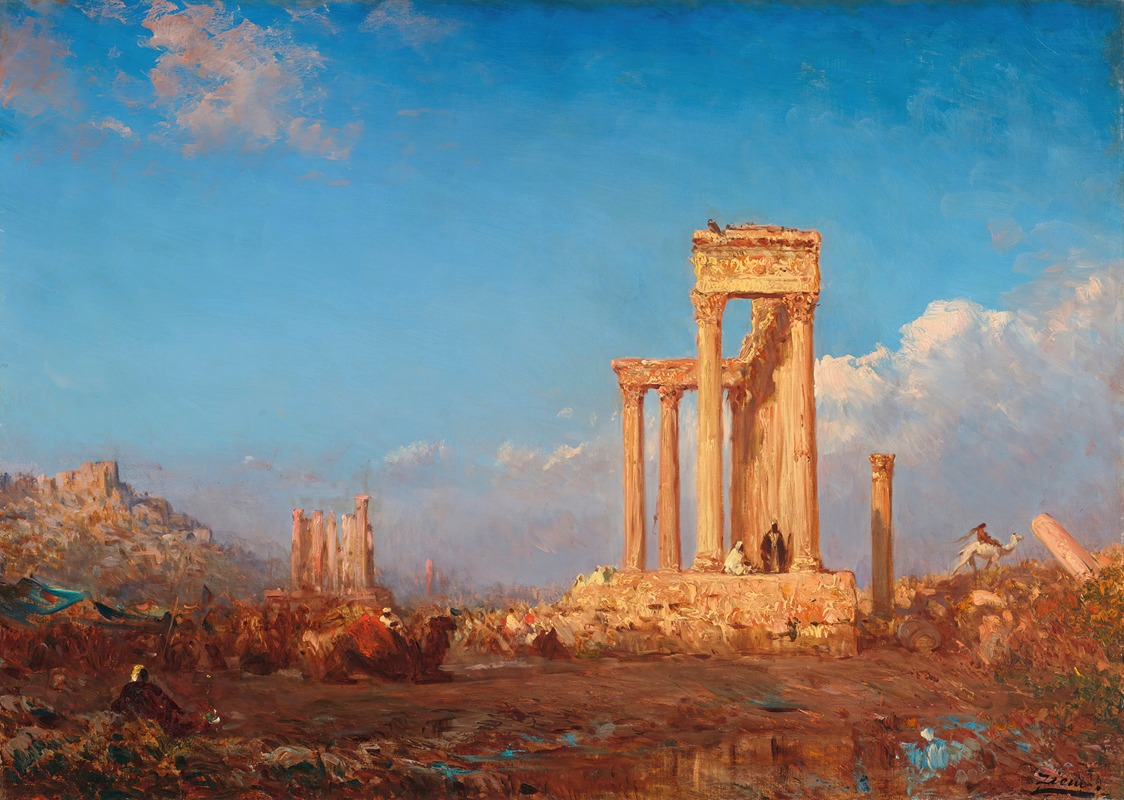
Ruins, Palmyra
A hand-painted replica of Félix Ziem’s masterpiece Ruins, Palmyra, meticulously crafted by professional artists to capture the true essence of the original. Each piece is created with museum-quality canvas and rare mineral pigments, carefully painted by experienced artists with delicate brushstrokes and rich, layered colors to perfectly recreate the texture of the original artwork. Unlike machine-printed reproductions, this hand-painted version brings the painting to life, infused with the artist’s emotions and skill in every stroke. Whether for personal collection or home decoration, it instantly elevates the artistic atmosphere of any space.
Félix Ziem, a renowned French painter of the 19th century, is celebrated for his vibrant landscapes and cityscapes, often depicting scenes from Venice and the Mediterranean. Among his diverse body of work is the painting "Ruins, Palmyra," which captures the ancient city of Palmyra, located in present-day Syria. This painting is a testament to Ziem's fascination with the exotic and the historical, reflecting the 19th-century European interest in the Orient, a trend known as Orientalism.
Palmyra, once a thriving city in the Roman Empire, is famed for its grand architectural ruins, which include temples, colonnades, and tombs. The city was a crucial cultural and trading hub, linking the Roman Empire with Persia, India, and China. Its ruins, which stand as a testament to its historical significance, have been a source of inspiration for many artists and travelers over the centuries.
Ziem's depiction of Palmyra is characterized by his distinctive style, which often includes vivid colors and dynamic compositions. While specific details about the painting "Ruins, Palmyra" are limited, Ziem's works typically convey a sense of movement and atmosphere, capturing the essence of the location rather than focusing on precise architectural details. His use of light and color often evokes the warmth and vibrancy of the Mediterranean and Middle Eastern landscapes.
The painting likely reflects Ziem's ability to blend realism with romanticism, a hallmark of his artistic approach. By focusing on the ruins of Palmyra, Ziem not only highlights the architectural grandeur of the ancient city but also evokes a sense of nostalgia and mystery, common themes in Orientalist art. This approach would have appealed to the European audience of his time, who were fascinated by the exotic and the ancient.
Félix Ziem was part of the Barbizon School, a group of painters who were instrumental in the development of landscape painting in France. Although he was not a central figure in the movement, his work shares the Barbizon School's emphasis on naturalism and the depiction of light. Ziem's travels across Europe and the Middle East provided him with a wealth of subjects, and his paintings often reflect his experiences and observations from these journeys.
"Ruins, Palmyra" fits within the broader context of Ziem's oeuvre, which includes numerous scenes from Venice, Constantinople, and other Mediterranean locales. His ability to capture the spirit of a place, combined with his technical skill, has earned him a lasting place in the history of art. Today, Ziem's works are held in various museums and private collections around the world, appreciated for their beauty and historical significance.
In summary, while specific details about the painting "Ruins, Palmyra" by Félix Ziem are scarce, it can be understood within the context of his broader body of work and the 19th-century European fascination with the Orient. Ziem's paintings continue to be celebrated for their vibrant depiction of landscapes and their ability to transport viewers to distant, historical places.







